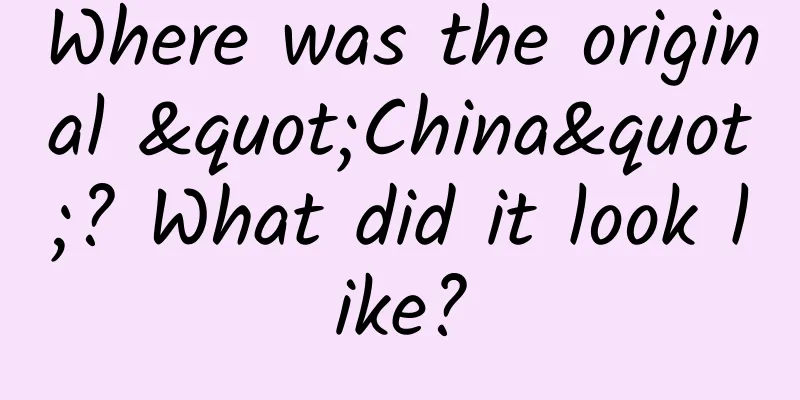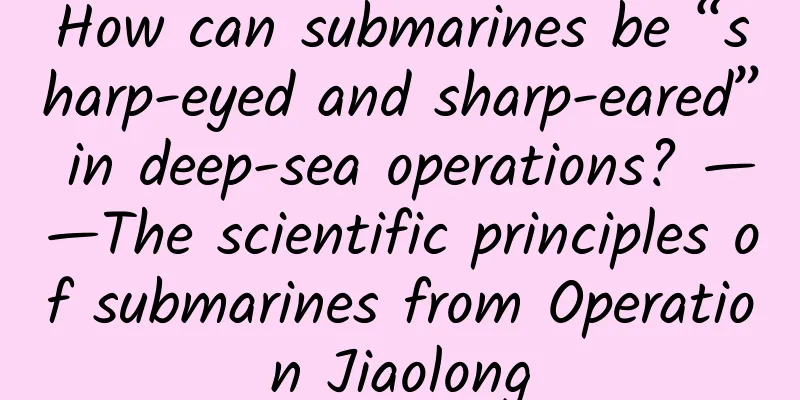Where was the original "China"? What did it look like?

|
The ancient city of Taosi lies in the northeast of Xiangfen County, Linfen City, Shanxi Province, at the big bend in the middle reaches of the Yellow River. China Report reporters visited the Taosi site twice, in December 2023 and June 2024. If it weren't for people taking photos near the restored buildings of the observatory, it would be hard to imagine that this was once a huge ancient country. Indeed, with 5,000 years of Chinese history, is there any piece of loess without history? But it is also because of the long history that many historical traces have been lost in the long river of time. Therefore, more than 2,300 years ago, Qu Yuan asked the "Heavenly Questions": "At the beginning of ancient times, who preached it? How can we study it when the world was not yet formed?" Taosi is an important coordinate for people today to trace the roots of Chinese civilization. In December 2023, the latest progress of the "China Civilization Origin Exploration Project" was released, which pointed out that the ancient country era was around 5800 to 3800 years ago, and the dynasty era began 3800 years ago. The Taosi site is 4300 to 3900 years old, just on the eve of the dynasty era. In the 46 years since the excavation, the basic features of the Taosi royal system and the early state have begun to emerge. △ On June 21, an aerial photo of the Taosi Palace site under excavation. Photo by Teng Yanyan "No other site possesses all the elements and signs of the origin of civilization like the Taosi site." As the chief expert of the first to fourth phases of the "Chinese Civilization Origins Project", Wang Wei, academician of the Chinese Academy of Social Sciences and director of the History Department, has been widely quoted in reports related to Taosi. "We have proposed a Chinese plan for judging the entry into a civilized society. To put it simply, production develops, population increases, cities emerge; social division of labor and social differentiation continue to intensify, classes emerge; power continues to strengthen, and monarchy and the state emerge. On this basis, there are five major signs, namely the capital, palaces, tombs, ritual vessels and rituals, and war violence. All these elements of civilization are reflected in Taosi." Wang Wei told a reporter from China Report that the palace system and ritual system of Taosi civilization were inherited and absorbed by the Xia, Shang and Zhou dynasties, and had a profound impact on the civilization of later dynasties. The "First China" "Around 4,500 years ago, the most advanced historical stage shifted to southern Shanxi. Taosi culture arose in southern Shanxi, which is equivalent to the Yao and Shun era in ancient history, that is, the first 'China' that appeared in pre-Qin historical records, and laid the foundation for China." Archaeologist Su Bingqi has long been aware of the importance of Taosi. "The core gene of the time and space political civilization of the Taosi state is 'strategic and comprehensive'." He Nu, a researcher at the Institute of Archaeology of the Chinese Academy of Social Sciences who has long served as the leader of the Taosi archaeological team, told China Report reporters. He Nu explained that the core connotation of the so-called "heavenly" is politics, that is, the king's monopoly of the solar horizontal calendar, the gnomon shadow solar calendar, and the yin-yang calendar to control the year, and the Taosi state's management of time serves politics. "One of the outstanding characteristics of Chinese civilization is to observe celestial phenomena, formulate calendars, and teach people time. The Taosi site verifies this important feature." The so-called "latitude of the earth" means that the Taosi king used astronomical and geodetic measurements to establish a world view of the five directions of politics and geography, and used the concept of yin-yang, eight trigrams and eight directions to control the functional planning of the capital, establish a central pole, and control the spatial lifeline of the country. This conceptual explanation is relatively obscure, but it may be much easier to understand if it is specifically based on archaeological evidence. At the site of the Taosi Observatory, located in the southeast of the middle period of Taosi, archaeologists and astronomers have restored a simulated building of the observatory. "If the existence of the observatory is acknowledged, it means that agricultural production was guided by astronomy at that time, which was obviously the core advanced technology at that time, reflecting the exploration and pursuit of 'heaven'." Gao Jiangtao, a researcher at the Institute of Archaeology of the Chinese Academy of Social Sciences and the leader of the Taosi archaeological team, told China Report that the Taosi Observatory can observe 20 solar terms, which is consistent with the record of Yao "observing astronomy and giving time" in the Book of History. △ The guichi and libiao unearthed from the early royal cemetery of Taosi are the earliest physical materials of guibiao instruments discovered by archaeologists. The picture shows the restoration scene of the unearthed guibiao in Linfen Museum. Photo by Xu Hao A gui-chi and a standing table were unearthed from the early royal cemetery in Taosi. These are the earliest physical materials of gui-chi instruments discovered by archaeologists. He Nu said that the gui-chi was used to measure the shadow of the sun. At noon, the sun shines on the table, and the length of the shadow cast is marked by the scale on the gui-chi. The shadow is shortest at the summer solstice and longest at the winter solstice. The gui-chi can be used to formulate the solar calendar and to measure and find the "center of the earth". The eleventh scale mark of the Taosi gui-chi is 40 cm long, which is 1.6 feet in Taosi. This is the standard scale of the "center of the earth" in southern Shanxi 4,000 years ago. The "capital of the center of the earth and the country of the middle earth is 'China'" measured by this. "The Taosi capital ruins and the state social structure of the Taosi culture are perfectly combined with the concept of 'center of the earth'. The concept of 'original China' appeared or was formed in Taosi," said He Nu. "The concept of 'Zhong' is very important," Feng Shi, academician of the Chinese Academy of Social Sciences and researcher at the Institute of Archaeology, told China Report. In ancient Chinese political and religious views, "Zhong" means "the center of heaven and earth." God and gods live in the center of the sky. After the royal power obtains the "mandate of heaven," the royal court must be built in the center of the earth. Only in this way can the most direct connection between the human king and the emperor of heaven be established. Feng Shi believes that, based on the research of archaeology, literature and astronomy, as early as 6,500 years ago, the "center of the earth" was located in the Taosi area. The Puyang Xishuipo Tomb, which is basically on the same latitude as Taosi, is a proof that the length of the sun's shadow at the summer solstice in the two places is roughly the same. After "Yu drew the nine states", the world pattern changed. In the middle and late Xia Dynasty, Shang Jiawei, the ancestor of the Shang Dynasty, believed that the center of the earth measured that year was not the real center of the earth. After re-surveying, the center of the earth was determined to be in the Songshan area, so the royal court of the Xia Dynasty later moved to Erlitou. The capital city in the process of civilization transformation Around 4,300 years ago, the process of civilization in various parts of China underwent a transformation, with the important feature being the rise of the Central Plains. Taosi, located in the Central Plains, was too dazzling during this period. Wang Wei said that the archaeological findings at Taosi showed that as early as 4,300 years ago, a political power center earlier than the Xia Dynasty had been formed in southern Shanxi, forming an early civilized society with a pyramid-like social structure, a certain distribution range, public power, official management of handicrafts, painted pottery art, and the use of writing. He Nu introduced that more than 40 years of archaeological excavations show that the early remains of Taosi date back to 4300 to 4100 years ago, covering an area of about 1.6 million square meters. With the "Palace City" of 130,000 square meters as the core, the "Lower City" on the south side is the residential area for lower-class nobles, and the two sides of the Palace City are early ordinary residential areas. The "National Treasury" storage area is to the east of the Palace City, and the early royal cemetery is to the southeast of the storage area. Nearly 1,000 meters northwest of the Palace City is the "Zezhong Zhongqiu" Earth Altar for sacrificial land. The remains of the middle period of Taosi date back to 4100 to 4000 years ago, covering an area of more than 2.8 million square meters. During this period, the Palace City and the "National Treasury" storage area continued to be used, and the lower-class nobles' residential area in the "Lower City" was abandoned, and a huge outer city was built, forming a double-city pattern of the Palace City and the Guocheng, and the double-city system model of the ancient Chinese capital was established. The late Taosi remains date back to 4000 to 3900 years ago, covering an area of 3 million square meters. During this period, the palace area was abandoned, the city walls were destroyed, and the Taosi site became a general settlement site. △ A panoramic model of the miniature landscape of the Taosi Palace City, located near the Taosi Quelou Ruins. Photo by Xu Hao "The 2.8 million square meter giant city site of Taosi was the largest in the middle reaches of the Yellow River during the same period. This period was equivalent to the Yao and Shun period. Quite a number of scholars, including myself, believe that it was likely the capital of Yao and Shun." Wang Wei told China Report that the ancient city of Taosi was a capital-level site with complete functional divisions. "The palace structure of Taosi had a profound impact on the layout of palaces in later generations. The site of Taosi Palace No. 1 covers an area of more than 6,000 square meters and was built on a super-large rammed earth foundation. This pattern continued in the palaces of the Xia, Shang and Zhou dynasties, and even in the imperial palaces of the Ming and Qing dynasties." "The planning layout and concept of a capital city site can, to a certain extent, reflect the inheritance and development of the previous culture of its society." Gao Jiangtao said that the layout of the Taosi site was obviously planned, and the site can be divided into the palace city and palace area, storage area, cemetery, observatory sacrificial area, handicraft workshop area, ordinary residential area, etc. The Erlitou site also has a core area and an ordinary area, with palace city and palace area, sacrificial area, cemetery, handicraft workshop area and other functional divisions. Gao Jiangtao believes that Taosi and Erlitou have similarities in layout planning and even the selection of specific locations and orientations for functional zoning. In particular, the palace city, as the core area of the capital layout, has a process of development and change: from the "quasi-palace area" with large buildings or house sites concentrated in the Shuanghuaishu, Qujialing, Liangzhu and other sites, to the Taosi site gradually building city walls outside the "palace area", becoming a real "palace city", which was further inherited to the palace city of Erlitou and then to the palace city of the Shang city of Yanshi. In 2018, archaeologists discovered the remains of a "que tower"-style building on the wall of the palace city at the Taosi ruins. The foundations of two que towers extend from the southern wall of the palace city. This ceremonial gate model is similar to the style of the que tower of Yingtian Gate in Luoyang City during the Sui and Tang Dynasties. The later Wumen Gate of the Forbidden City also followed this que tower model from more than 4,000 years ago. The "Spiritual Civilization" of Taosi People The ritual system is an integral part of the early state political system and is known as "the vehicle for governing the country and the tool for governing the country." Gao Jiangtao introduced that the large, medium and small tombs in the Taosi cemetery present a "pyramid-like" layout structure, and a hierarchical system with distinctions between the noble and the humble already existed. The large tombs at the top of the pyramid have rich and exquisite burial objects, and the tomb owners should be kings who control military power, clan power, and divine power. However, the small tombs that account for the vast majority of the tombs have only enough space for the deceased, and the deceased has no valuables, so they must have been ordinary people at that time. Different types of ritual objects such as painted pottery, lacquered wood, jade, and ritual musical instruments such as pottery drums, crocodile drums, and stone chimes were unearthed from the royal tombs of Taosi. It is worth noting that in the Taosi tombs, which were buried more than 100 years apart, the number, combination, and placement of musical instruments were fixed and unified, indicating that a fixed regulation had been formed. At the same time, copper bells, container rims, gear-shaped objects, rings, toads, and other bronze objects unearthed from the ruins and cemeteries constitute the richest group of red copper castings in China's prehistoric period, heralding the arrival of the "sound of gold and stone." △ Jade artifacts such as jade axes, jade shuangji, and jade bi unearthed from the Taosi site. Photo by Xu Hao The medium-sized tombs of Taosi society can be divided into three funeral spaces: coffin, outside coffin, and second-tier platform, showing different functions and rituals. Among them, the outside coffin clearly shows different scenes such as "eating", "cooking", and "daily furnishings". The second-tier platform is buried with pig mandibles, reflecting the solemn and serious funeral ceremony during the burial process. "During the Erlitou culture period, the ritual system was further developed and spread to a wider range. For example, ritual jade vessels and jade adzes were spread to most parts of China. From ritual vessels to complex ritual systems, Taosi society passed the baton of the ritual and music system to Erlitou," said Gao Jiangtao. The ritual and music system directly reflects the spiritual civilization of the Taosi people. He Nu said that some musical instruments were unearthed at the Taosi site, showing the embryonic form of ritual and music civilization. The combination of pottery drums, crocodile drums, and stone chimes shows that the eight sounds were initially prepared. Pottery drums and crocodile drums belong to the leather in the eight sounds, stone chimes belong to the stone in the eight sounds, pottery Xun belongs to the earth in the eight sounds, copper bells belong to the gold in the eight sounds, and wooden 柷 belongs to the wood in the eight sounds. Crocodile drums and stone chimes are the same group of musical instruments, with two drums and one chime, accompanied by an earthen drum. The upper mouth of the crocodile drum is covered with crocodile skin, and the overall shape is cylindrical. The drum cavity uses natural tree trunks to scrape off the bark, hollow out the inner cavity and dry it, and then paint the outside. He Nu explained to the reporter of China Report that spiritual civilization is the civilization of ideas, while institutional civilization is more of a political system. Spiritual civilization includes the view of nature, society and religion. These three concepts have two expression systems, one is art, and the other is words and symbols. The view of nature includes scientific views, and another important component is the view of the universe. The view of society is actually political thought, ritual thought, and hierarchy. The core of religious view is actually offering sacrifices to heaven, earth, and ancestors. "The Central Plains basically has such a set of logic or such a gene." Taosi also unearthed written texts. A representative example is a flat pot unearthed from a late ash pit in Taosi. On the front of the pot is a red character on the bulging belly, which is very similar to the character "文" in oracle bone script and bronze inscriptions. There is another red character on the back, and there are many opinions on how to interpret it. Some scholars interpret it as "昜", some scholars interpret it as "邑", and some scholars interpret it as "尧". Despite the differences, the academic community generally believes that this is the text closest to oracle bone script, which is of great significance to the exploration of the origin of Chinese characters. The dragons of Taosi also left a valuable legacy for future generations. The painted dragon plates of Taosi were only unearthed in large tombs. The image of the dragon was a combination of many animal images, and the dragon was combined with royal power and even the country with royal power as the core, and the worship of the dragon was developed into a symbol of the ethnic group or the country. There is a relatively obvious inheritance relationship between Taosi and Erlitou in terms of the dragon image. "But the artistic expression of Taosi is rather strange. To be honest, Taosi does not seem to attach much importance to artistic expression, and its artifacts are not exquisite. This is a huge difference from Liangzhu," said He Nu. The preparation for entering the "Dynasty Era" In recent years, there has been more and more discussion about Taosi being the "capital of Yao and Shun." "From an archaeological perspective, we infer the unknown from the known. For example, the Shang Dynasty has now been confirmed to exist, and the Xia Dynasty has also been proven to be reliable history. Going back further, a large number of archaeological cultures reflect the discovery of entities and civilizational factors of some ethnic groups, such as Liangzhu, Taosi, and even Longshan, Shijiahe, and so on." Gao Jiangtao believes that a large number of archaeological facts show that Taosi had entered the early state period, and we can see the atmosphere of "the earliest China, the main vein of Huaxia." △ The painted dragon plate of Taosi, which is only found in the royal tombs. Photo by Teng Yanyan As for what this period is, the records in the literature are equivalent to the era of Yao, Shun and Yu. "There are many records of Yao, Shun and Yu in the literature, and our archaeological discoveries also show this era. To put it bluntly, the key is the issue of 'correspondence', whether it is completely equal or partially equal, this is a matter of opinion." Gao Jiangtao told the reporter of China Report. "The core of Chinese civilization is in the middle reaches of the Yellow River. Chinese civilization has gone through a path of diversity and unity, and its core was finally formed in the Central Plains. Its starting point was the Taosi State, and its mature point was the Erlitou Dynasty State. The civilization of the Taosi State, from material civilization, spiritual civilization to institutional civilization, began to form an important part of the value concept system in Chinese civilization in a way of upholding the truth, promoting innovation, absorbing all cultures, and embracing all. It has become the excellent traditional cultural gene of Chinese civilization." He Nu said. Wang Wei summarized the period in which Taosi existed as "embracing all rivers and seas". "Taosi civilization absorbed and gathered the advanced civilization factors around it, which is its most prominent feature." Gao Jiangtao believes that although there were multiple civilization areas and forms in that period, different regions began to gradually identify with a certain civilization in consciousness, which is "recorded in literature and discovered in archaeology." He gave an example, saying that many representative artifacts of other regional civilizations that did not belong to the Taosi civilization were found in Taosi, and there was an obvious gathering of factors of other advanced regional civilizations, such as the jade axe with Haidai culture characteristics, the pig mandible buried with the dead, the jade cong and jade bi of Liangzhu culture in the lower reaches of the Yangtze River, the jade ornaments of the post-Shijiahe culture in the middle reaches of the Yangtze River, and the copper smelting technology introduced from West Asia through the upper reaches of the Yellow River. "The fact that things from all over the world came together in one place shows that the 'king' of Taosi not only had a broad understanding of civilizations from all over the world, but also absorbed the achievements of these civilizations more widely and was willing to transform the symbols of these 'foreign cultures' into part of his own culture. This in itself is an open-minded attitude with a global vision," said Gao Jiangtao. By the time of Erlitou, the dynasty atmosphere had already emerged. Entering the dynasty era, the ritual vessels and ritual system created by Erlitou culture, represented by the jade halberd, radiated to the surrounding areas, with an unprecedented wide range of influence. Although Erlitou and Taosi were not directly connected, Erlitou accepted the civilization form created by Taosi, such as Erlitou's inheritance of Taosi's capital system and ritual system, dragon culture, handicraft form, etc. "The Taosi civilization is the earliest evidence to date of the early civilization in the Yellow River Basin. The Taosi civilization was inherited and developed by the Xia, Shang, Zhou and later dynasties, becoming an important symbol and one of the main sources of the diversified and integrated development of Chinese civilization." Gao Jiangtao said, "The continuous development of Chinese civilization for more than 5,000 years is because the successor civilizations inherited and developed the previous civilization forms." △ A painted folded-belly basin unearthed from Taosi. The basin is painted with red, white and green on a gray-brown body, with a ring-shaped pattern composed of zigzag geometric patterns. The whole vessel is brightly colored. Photo by Xu Hao ►What discoveries were made in the Taosi archaeological excavation? BY Gao Jiangtao The Taosi site was discovered during a cultural relic survey in the 1950s. After 46 years of archaeological excavations, we have a clearer understanding of Taosi. The major archaeological discoveries of the Taosi site can be summarized in 10 aspects: The first is cultural distribution . The cultural distribution of the Taosi site is very unique. We have discovered more than 100 sites belonging to the Taosi culture, distributed in the Linfen Basin. These sites have formed settlements of different levels or differentiation. Now it seems that the distribution of Taosi cultural sites can be divided into four levels of settlements, which shows that the society and organizational structures at that time had begun to have hierarchical differentiation. The second is the location of the capital . The Taosi site is located between the river valley lowlands and the foothills highlands. In terms of the ecological environment of the small area, it is also a micro "ecological transition zone" between two different landforms and hydrological forms. The capital is located in the relatively closed Linfen Basin, which has a superior environment, fertile land, and suitable hydrology. The economy of the agricultural society developed rapidly and wealth accumulated rapidly, which further promoted the formation of a hierarchy closely related to political power institutions and wealth distribution, and the early Taosi state emerged. The third is the five grains and six livestock . In the Taosi site, we found carbonized seeds of millet, sorghum, rice, beans, etc. It can be seen that "multiple grains" except wheat have been excavated in Taosi. In addition, the livestock that we commonly see today basically existed during the Taosi culture period, such as pigs, sheep, yellow (water) cattle, dogs, deer, bamboo rats, rabbits, etc. Fourth, the layout of the city site . The layout of the Taosi city site was clearly planned, and the city site can be divided into the palace city and palace area, storage area, cemetery, observatory sacrificial area, handicraft workshop area, ordinary residential area, etc. The fifth is to observe the weather and tell time . Based on the accumulation of prehistoric astronomical knowledge, the ancestors of Taosi organically combined the natural landscape of the Taer Mountain in the east of the Taosi site with the artificial rammed earth buildings, and creatively built an "Observatory" in the southeast of the Taosi site. The Taosi Observatory can observe 20 solar terms including the winter solstice, summer solstice, spring equinox, and autumnal equinox, which is obviously an important source of the 24 solar terms closely related to agricultural production. Sixth, the real dragon is an image . The painted dragon plate of Taosi was only unearthed in a large tomb. The image of the dragon is a combination of many animal images, and the dragon is combined with the kingship and even the country with the kingship as the core, and the worship of the dragon is developed into a symbol of the ethnic group or the country. Seventh, the center is determined by the ruler . The lacquer rod unearthed from the tomb of the king in the middle period of Taosi is a ruler for measuring the sun's shadow. The ruler represents the "center of the earth", and the Taosi area or the southern Shanxi region in general should at least be the "center of the earth" in the ideology of the people in the late Longshan period. Eighth, the burial form . From 1978 to 1985, Taosi excavated 1,309 tombs in a cemetery of more than 40,000 square meters, of which five large tombs were concentrated in the same area. All the tombs with tomb owners or skeletons were oriented toward the Taer Mountain, which shows that people at that time worshipped mountains and rivers. The ninth is to cast bronze with a mold . The bronze casting technology in the Xia, Shang and Zhou dynasties was the composite mold casting technology. This technology first appeared in the Longshan era, and the most typical one is the Taosi site. Taosi unearthed a real group of bronze artifacts. Currently, 7 bronze artifacts have been unearthed, belonging to different categories, but all used the composite mold casting technology. Tenth, the road network . After marking the important sites from southern Shanxi to Luoyang on the map, we can find that they are all distributed in a belt along a certain area, which is the ancient road recorded in the literature. These important sites have been distributed along the road more than 6,000 years ago, indicating that our road system had taken shape 6,000 years ago. By the Taosi culture period, a relatively complex road traffic network had already appeared. |
>>: Eating snacks at this time is actually helpful for controlling blood sugar?
Recommend
BYD builds an all-round charging system with five world-first technologies
On December 19, BYD held the "More Than Fast...
2021 CPA Money-Making Project Training Camp, where beginners can earn 200-1000 yuan per day
2021 Hand-in-hand teaching you how to play the CP...
What are the functions of the pet mini program? How to develop a pet store mini program?
Nowadays, more and more people like to keep pets, ...
Latest discovery: There are not only "three bodies" in the universe, but also terrible "devourers"
Recently, The Three-Body Problem has become a hot...
There are reports that Apple may change the way it makes money and allow Android phones to be equipped with the iOS system?
[[170000]] According to the IDC Global Mobile Pho...
Alipay flashes digital RMB
The testing process of the digital RMB is acceler...
As 2023 is coming to an end, let’s review ten major environmental events!
2023 is coming to an end and the new year is abou...
Do soy products increase uric acid? Can soda water lower uric acid? What you know may not be the truth!
Author: Wang Hailong, Chief Physician, Dongzhimen...
How to make a good online event promotion plan?
In marketing psychology, herd mentality, the ment...
Y-20 tanker officially enters service! Why is “aerial refueling” so important?
Recently, my country's Y-20 large aerial refu...
Y Combinator partners conducted a micro interview with entrepreneurs, the essence of which is here
[[155922]] Jessica Livingston is one of the most ...
Mouse Finance Four Mouse Gold Point System Course Volume Price Analysis Advanced Course 2022 Video 6 Episodes
Mouse Finance Four Mouse Gold Point System Course...
The Terminator of OLED? Quantum Dot Technology Lights Up the "Post-LCD" Era
To judge whether a product is successful, technic...
How much does it cost to customize a fabric mini program in Nujiang?
Nujiang fabric mini program customized price 1. D...
Where is the arrow of time heading? Physicists are uncovering the mystery of the "arrow of time"
So far, people's understanding of time has al...









